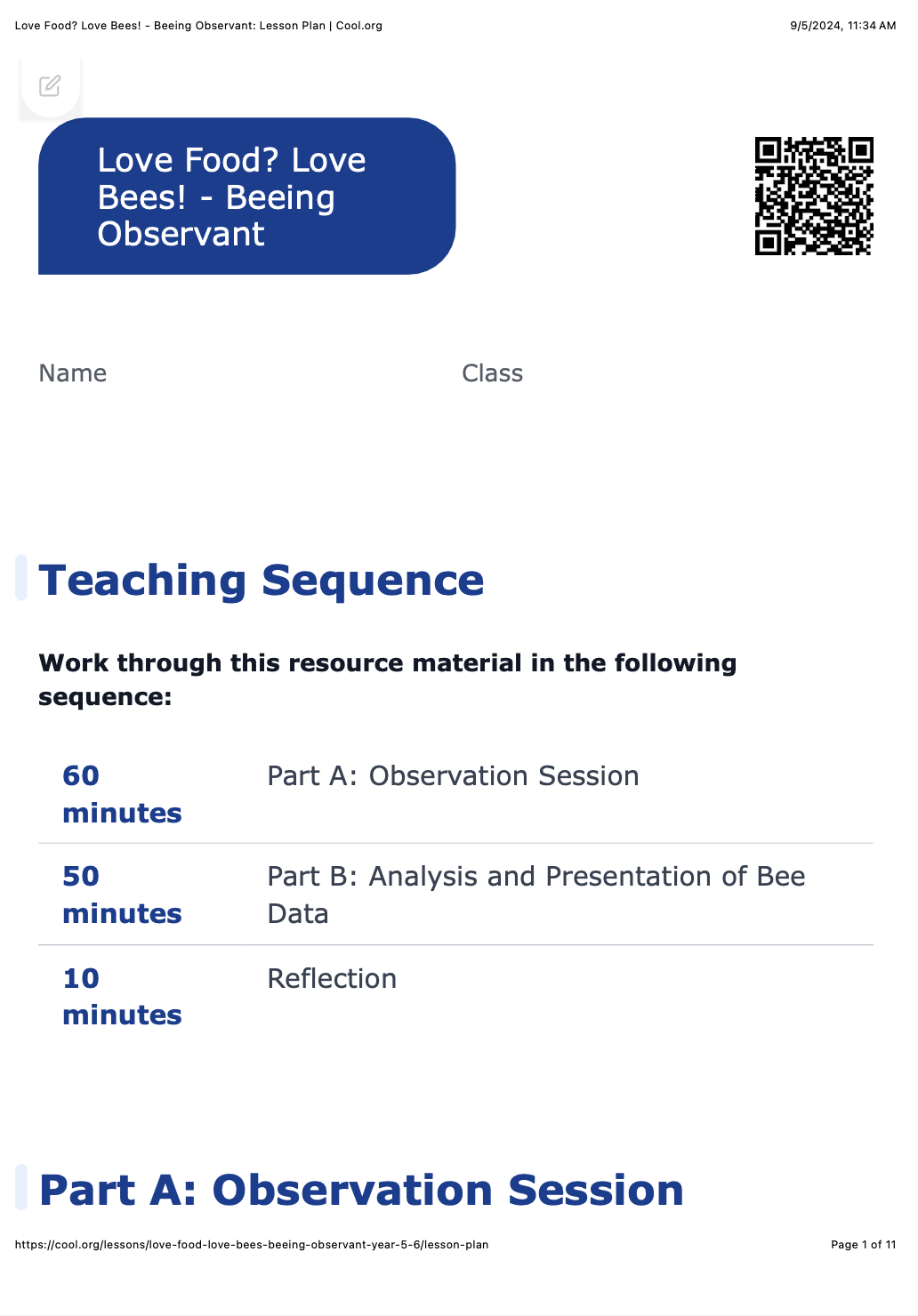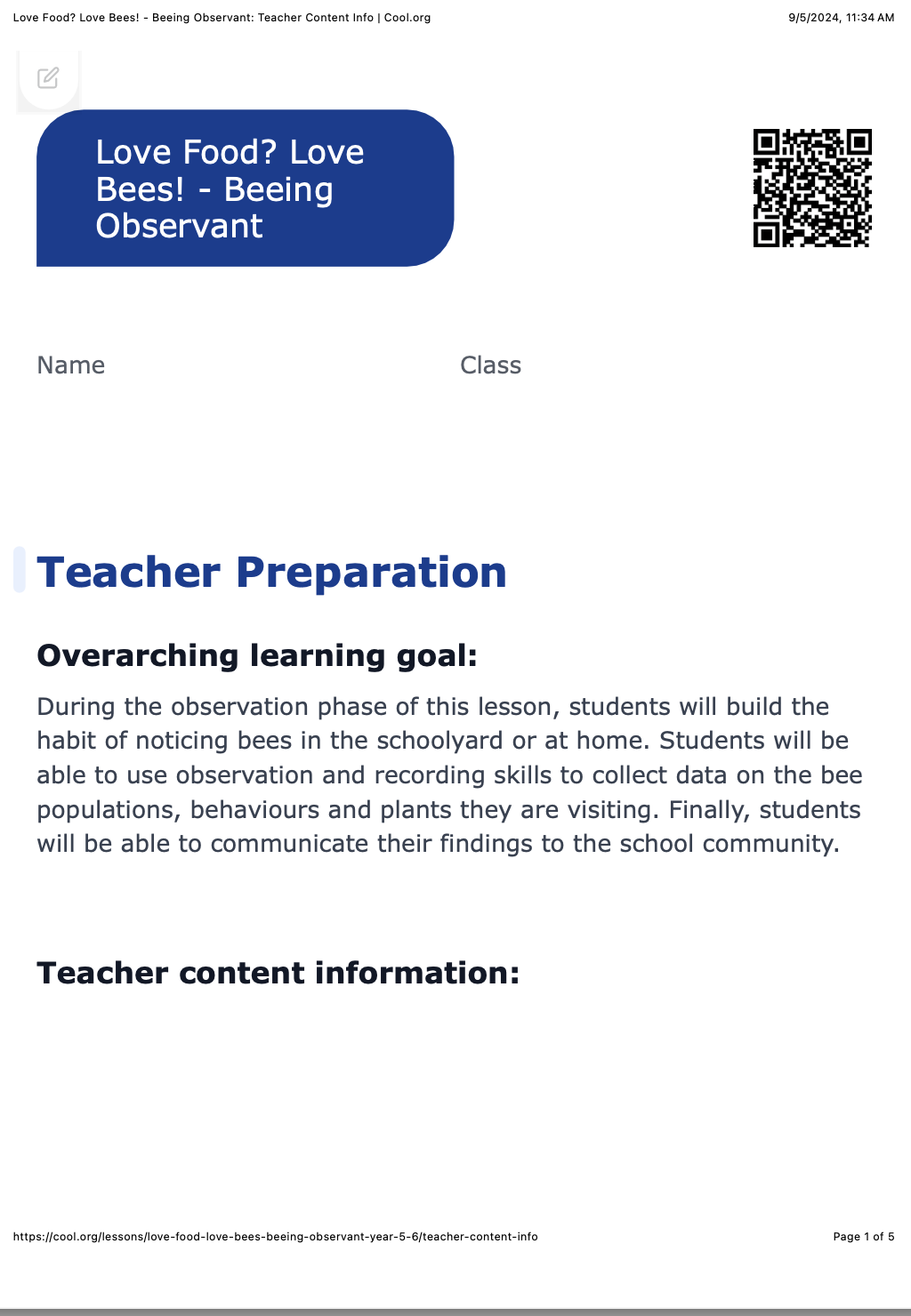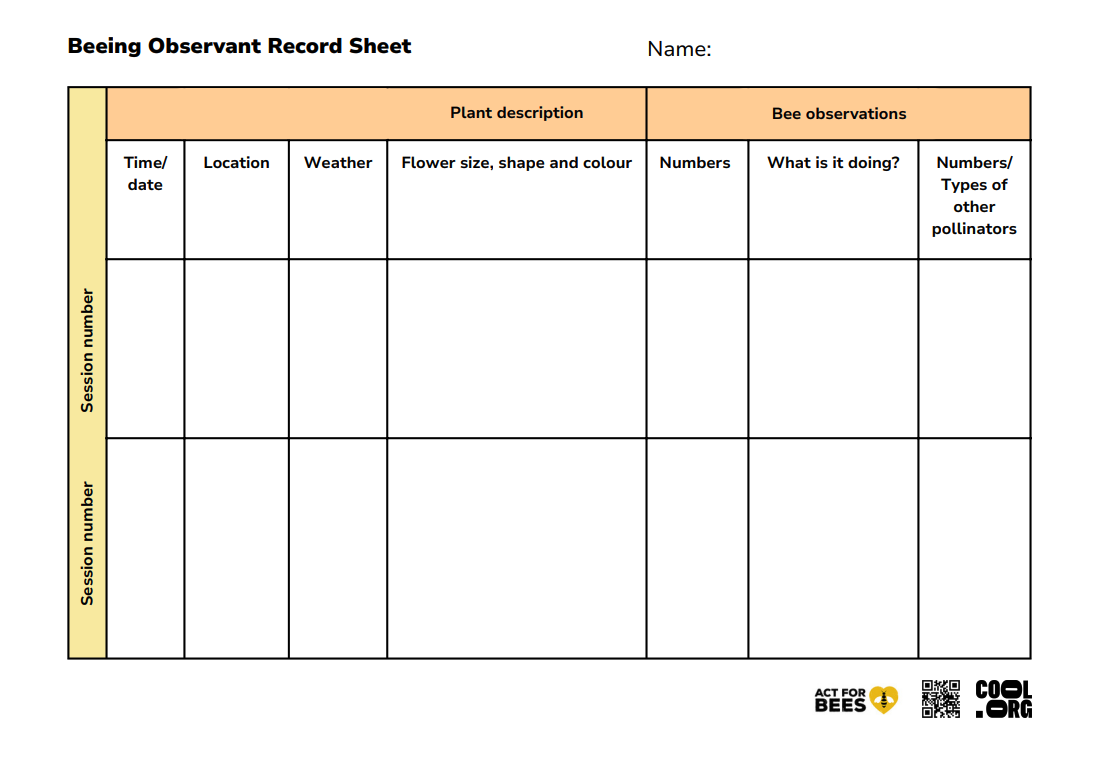Lesson summary
Bees pollinate at least a third of everything we eat and play a vital role in sustaining our ecosystems; therefore they need to be valued and protected. In this lesson students are connected to the wonder of bees by observing them interacting with plants in their schoolyard and in their gardens at home. Using their senses, they conduct a series of observations over a predetermined period of time (week/month/season/term) and then complete an analysis of their data, looking for patterns relating to the presence or absence of bees, bee behaviour and suitability of bee friendly plants. Finally, students produce a poster detailing their findings.
Learning intentions
Students will..
- conduct observations and collect data on bee populations and behaviours
- analyse the data to identify patterns in bee activity and plant suitability.
Success criteria
Students can..
- identify bee-friendly plants in the schoolyard or at home
- use observation and recording skills to collect data on the bee populations, behaviours and plants they are visiting and communicate their findings to the school community.
Lesson guides and printables
Curriculum links
Select your curriculum from the options below.
Lesson details
Skills
This lesson is designed to build students’ competencies in the following skills:
- communication
- problem solving
- collaboration
- critical thinking
- creativity
Curriculum Mapping
Australian curriculum content descriptions:
Year 5 Science:
- Living things have structural features and adaptations that help them to survive in their environment (ACSSU043)
- With guidance, pose clarifying questions and make predictions about scientific investigations (ACSIS231)
- Compare data with predictions and use as evidence in developing explanations (ACSIS218)
- Communicate ideas, explanations and processes using scientific representations in a variety of ways, including multi-modal texts (ACSIS093)
Year 6 Science:
- The growth and survival of living things are affected by physical conditions of their environment (ACSSU094)
- With guidance, pose clarifying questions and make predictions about scientific investigations (ACSIS232)
- Compare data with predictions and use as evidence in developing explanations (ACSIS221)
- Communicate ideas, explanations and processes using scientific representations in a variety of ways, including multi-modal texts (ACSIS110)
General capabilities: Ethical Understanding, Personal and Social Capability
Cross-curriculum priority: Sustainability
Relevant parts of Year 5 Science achievement standards: Analyse how the form of living things enables them to function in their environments.
Relevant parts of Year 6 Science achievement standards: Describe and predict the effect of environmental changes on individual living things.
Unit of work: Love Food? Love Bees!
Time required: 120 mins. However, the observation sessions will continue to run over a set period of time (week/month/season/term).
Level of teacher scaffolding: Medium – facilitate class discussion.
UN Sustainable Development Goals
- Target 15.5: Take urgent and significant action to reduce the degradation of natural habitats, halt the loss of biodiversity and, by 2020, protect and prevent the extinction of threatened species.
Resources Required
- Double-sided printed copies of Beeing Observant Record Sheet for each student at the commencement of each observation session, pen/pencil
- Printed copies of the Bee Poster Template for each student
- Optional: Bee safe! Factsheet, Honey Bees and European Wasps Factsheet, Some Interesting Facts About Bees
Additional Info
This lesson has been created in partnership with ACT for Bees. ACT for Bees is a not-for-profit organisation taking action to preserve these essential pollinators, ensuring a food-secure future.
Related Professional Learning
How To Teach Sustainability With Hope
Quick summary: This course is for both primary and secondary teachers of all subjects, but especially for English, Science, Humanities and Geography teachers who are covering climate change and the cross-curriculum priority of sustainability.




Welcome back!
Don't have an account yet?
Log in with:
Create your free Cool.org account.
Many of our resources are free, with an option to upgrade to Cool+ for premium content.
Already have an account?
Sign up with:
By signing up you accept Cool.org's Terms and Conditions(Opens in new tab) and Privacy Policy(Opens in new tab).